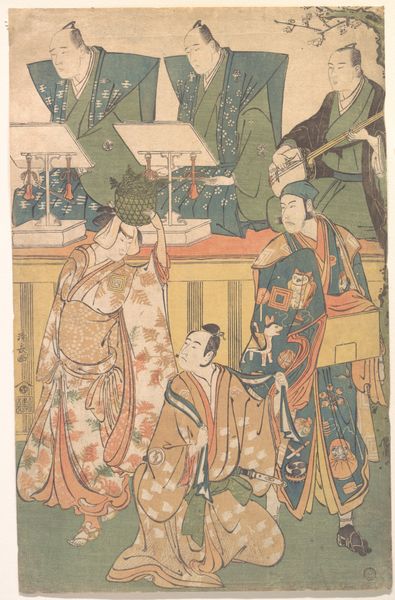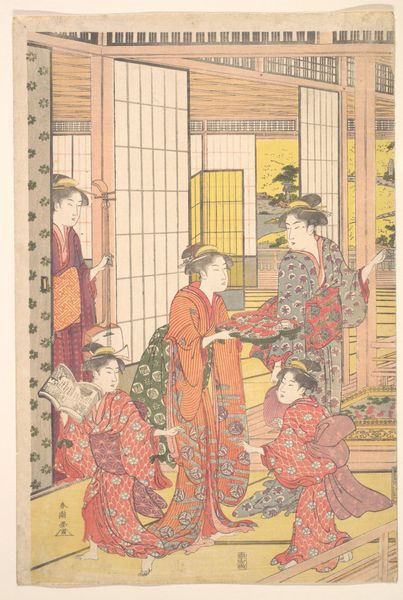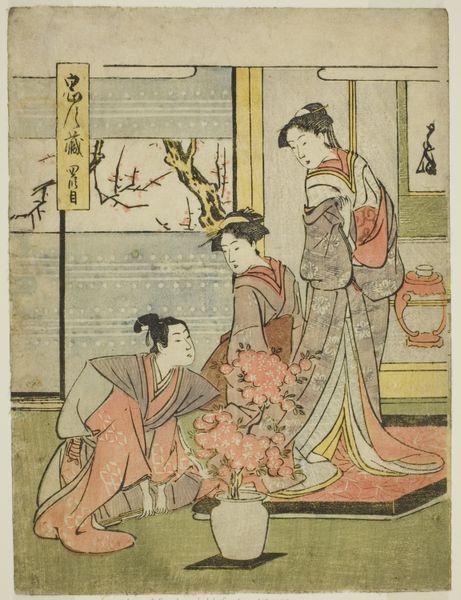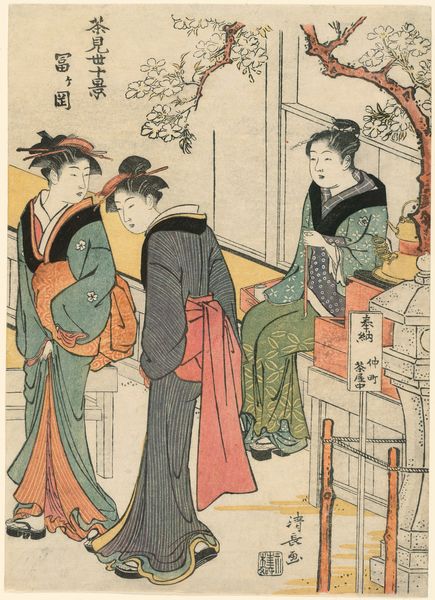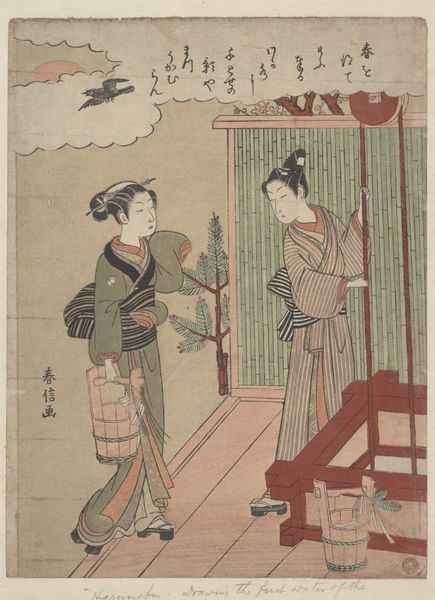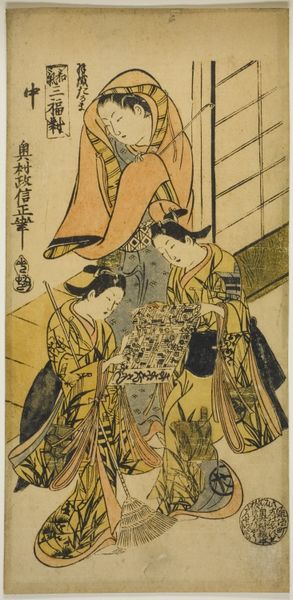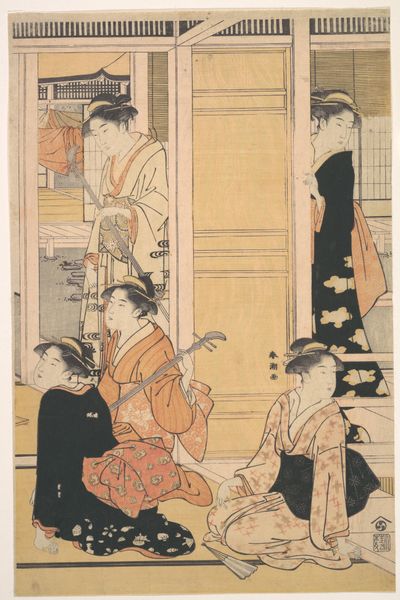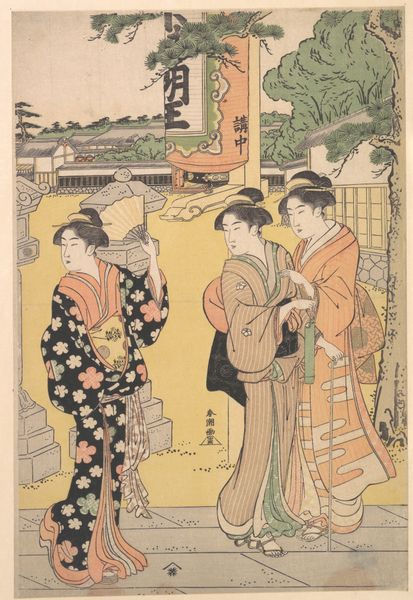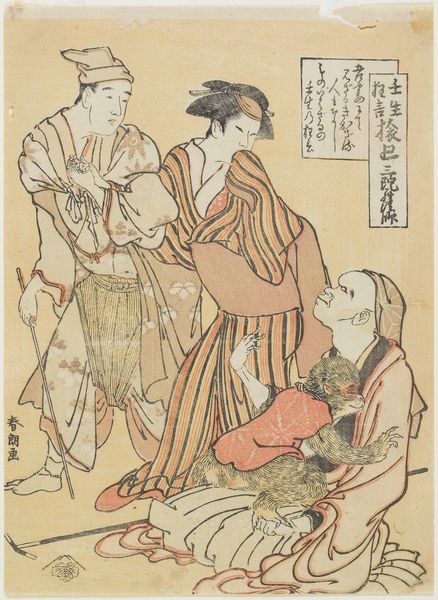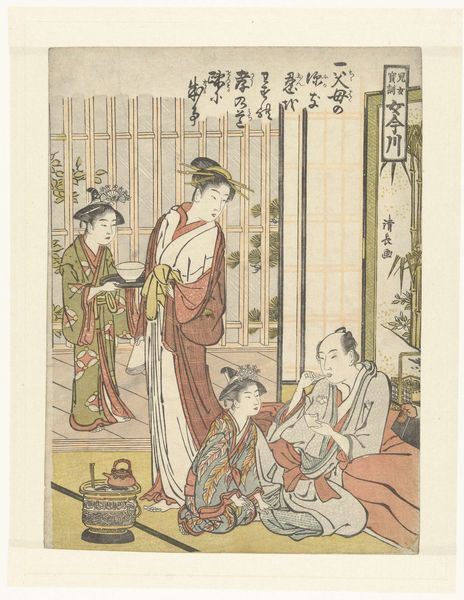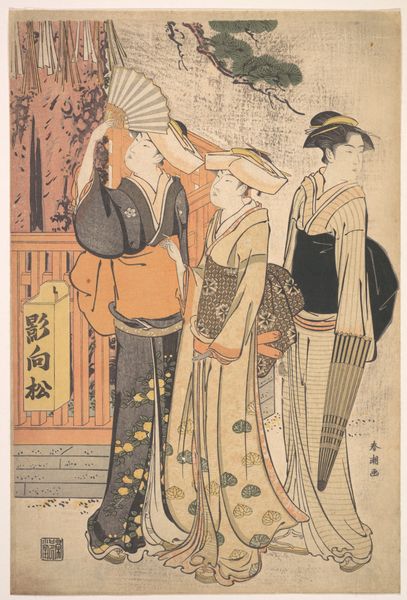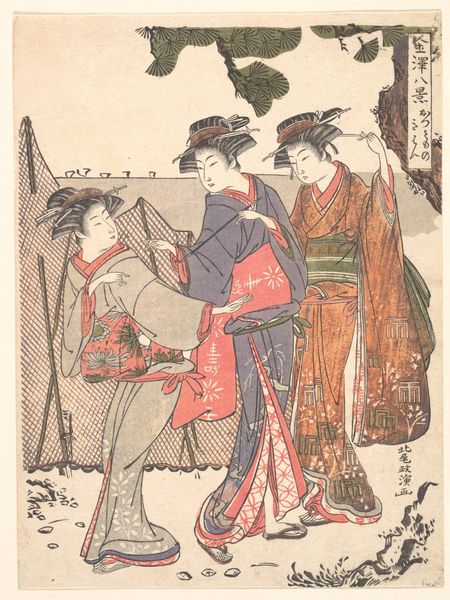
A Long-Tailed Fowl (Onagadori), from the series Twelve Assorted Birds (Shochō jūnikin) 1781 - 1801
0:00
0:00
print, woodblock-print
#
portrait
# print
#
pen sketch
#
asian-art
#
landscape
#
ukiyo-e
#
figuration
#
woodblock-print
#
orientalism
#
genre-painting
#
erotic-art
Dimensions: H. 10 1/16 in. (25.6 cm); W. 7 3/16 in. (18.3 cm)
Copyright: Public Domain
Curator: Let's turn our attention to Chōbunsai Eishi's woodblock print, titled "A Long-Tailed Fowl (Onagadori), from the series Twelve Assorted Birds." Dating from the late 18th century, it offers a glimpse into the ukiyo-e tradition. Editor: My first thought is the surface—it’s quite tactile, you can almost feel the individual woodblocks used to layer color and form. Look at the subtle impressions. Curator: Absolutely. Beyond the surface, consider the symbolic layering. The Long-Tailed Fowl itself is loaded, often linked to longevity, but also status, its plumage a marker of privilege and careful breeding. Here, it flies above the heads of figures observing the horizon. The bird represents prosperity. Editor: And how fascinating that prosperity, or the *idea* of prosperity, is consumed. Not just visually by those figures looking out at the fowl, but the materials as well -- expensive dyes, skilled labor to carve each color layer. How are the lower classes meant to access art that fetishizes the status the labor makes? Curator: The composition has social nuances. The arrangement directs our gaze; observe how the main figure points outward, subtly asserting her perception. Consider Mount Fuji in the background; a visual anchor, but is that physical proximity, and that type of view even accessible for those in society at that time? The children present below on the other hand have almost no point of access with limited height. The artist hints at more to contemplate below. Editor: True. Mount Fuji and these decorative motifs, those repetitive patterns on the kimonos; we’re talking about valuable materials, hand-painted fabrics – objects circulated within an economy fueled by desire and display. Also the erotic symbolism of the uncovered necks, revealing status and leisure with fashion, what level of expense comes to that in labor to produce the garment, care and then ability for that status to stand leisurely? Curator: Precisely. The interplay between symbolism and its rendering points to how art can reflect social stratifications and societal aspirations through consumer items. The material and process used reinforces these structures of symbolism. Editor: Well, Eishi gives us a lot to unpack, doesn't he? Thinking about process and labor involved in the production, challenges me to look beyond simple visual enjoyment and appreciate the rich complexity and subtle statement held within the material culture presented. Curator: Agreed. The dialogue between the artwork's message and materiality enables to find a more enriched perception on history of its viewers and of society's as well.
Comments
No comments
Be the first to comment and join the conversation on the ultimate creative platform.
